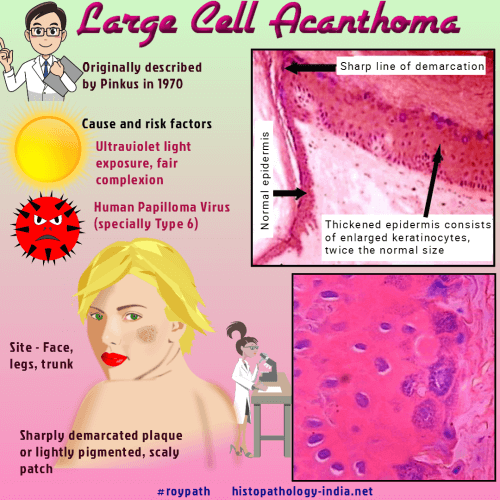|

Custom Search
|
|
Dermpath-India Pathology of Large Cell Acanthoma
|

|
Large cell acanthoma usually
presents as a well demarcated solitary plaque or scaly, lightly pigmented
patch on sun exposed skin.
HPV type 6 is considered an important cofactor in the pathogenesis of large-cell acanthomas. Site: Usually located on the face, or on the limbs and trunk.
Differential diagnosis includes solar lentigo and solar keratosis. (In solar keratosis there is parakeratosis, in large cell acanthoma there is orthokeratosis)
|
|
|


